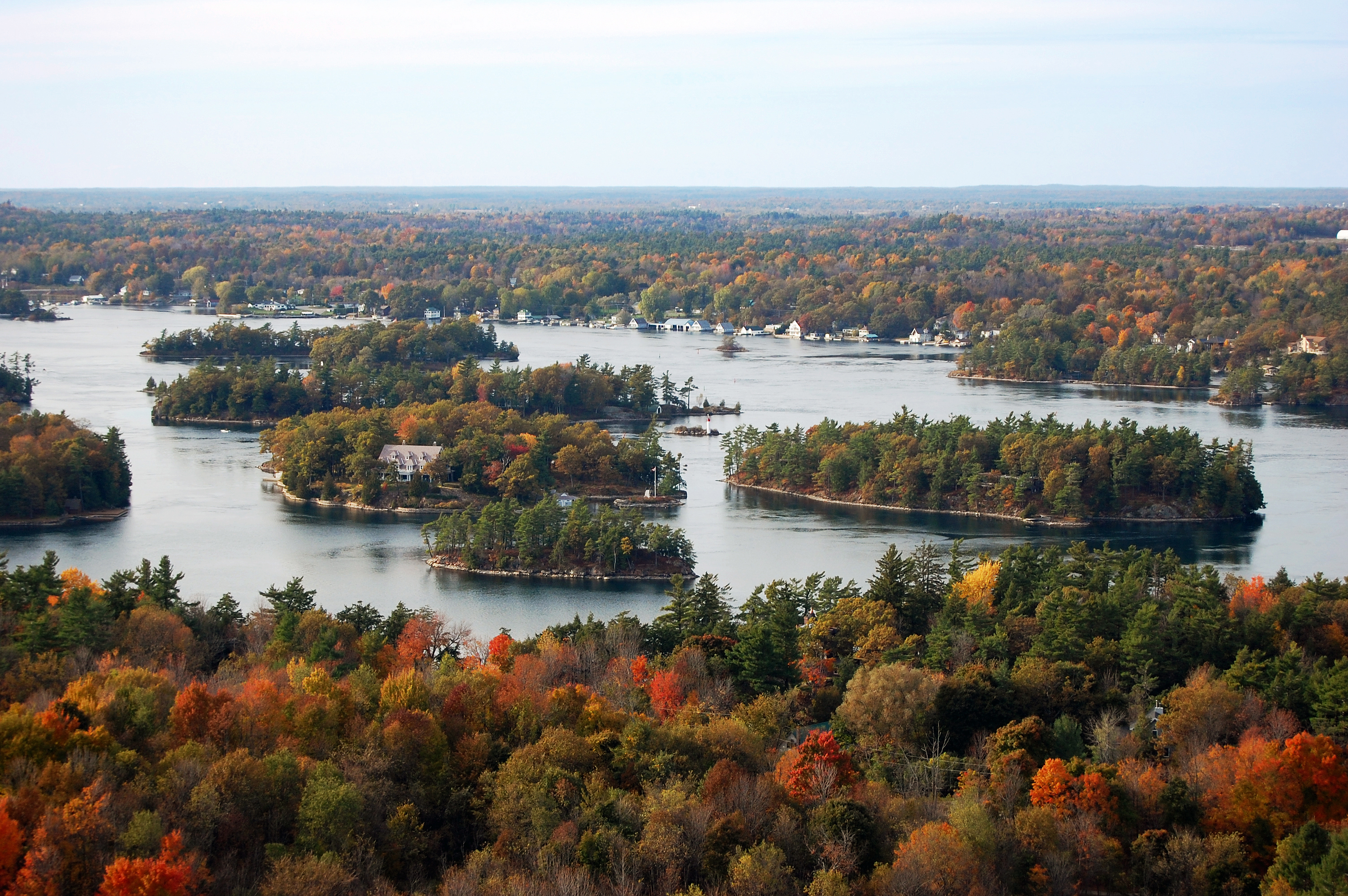Thousand Islands National Park is a scenic protected area in southeastern Ontario, Canada. It includes part of mainland Ontario, 29 islands, and more than 80 islets and shoals (mounds or ledges in shallow water). The islands extend along the St. Lawrence River between the cities of Brockville and Kingston, Ontario. Most of the islands are part of the Thousand Islands group, just northeast of Lake Ontario.

Thousand National Park contains forested areas, swamps, open fields, and shrub lands. There are nearly 1,000 kinds of plants in the park, including beech, birch, hemlock, hickory, and pitch pine trees; deerberry; rue anemone; and winged sumac. Animals living in the park include coyotes, deer, red foxes, wild turkeys, bald eagles, and large birds called ospreys. The park has a greater variety of amphibians and reptiles than most other Canadian national parks. Reptiles include the endangered black rat snake.
The park has cold winters and warm summers, with average temperatures ranging from about 18 to 70 °F (–8 to 21 °C). On average, it receives about 38 inches (97 centimeters) of precipitation each year.
Visitors may take part in such activities as boating, camping, fishing, hiking, and sightseeing. The waters surrounding the park are famous for their bass and a type of pike called muskellunge.
The government of Canada established St. Lawrence Islands National Park in 1904. It changed the park’s name to Thousand Islands National Park in 2013. Park headquarters are at Mallorytown Landing, on the west bank of the St. Lawrence River.
